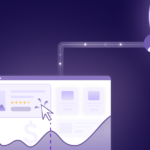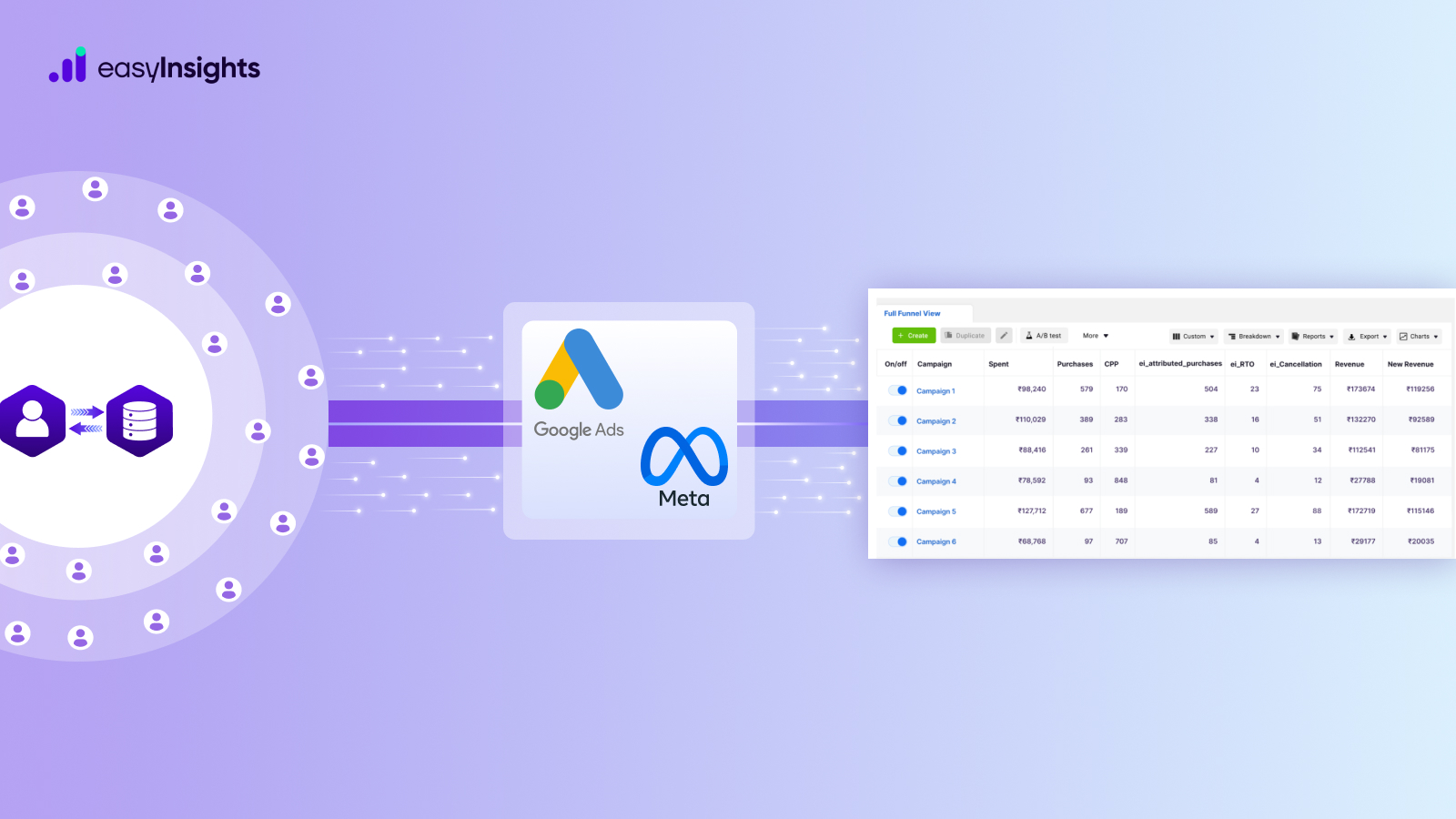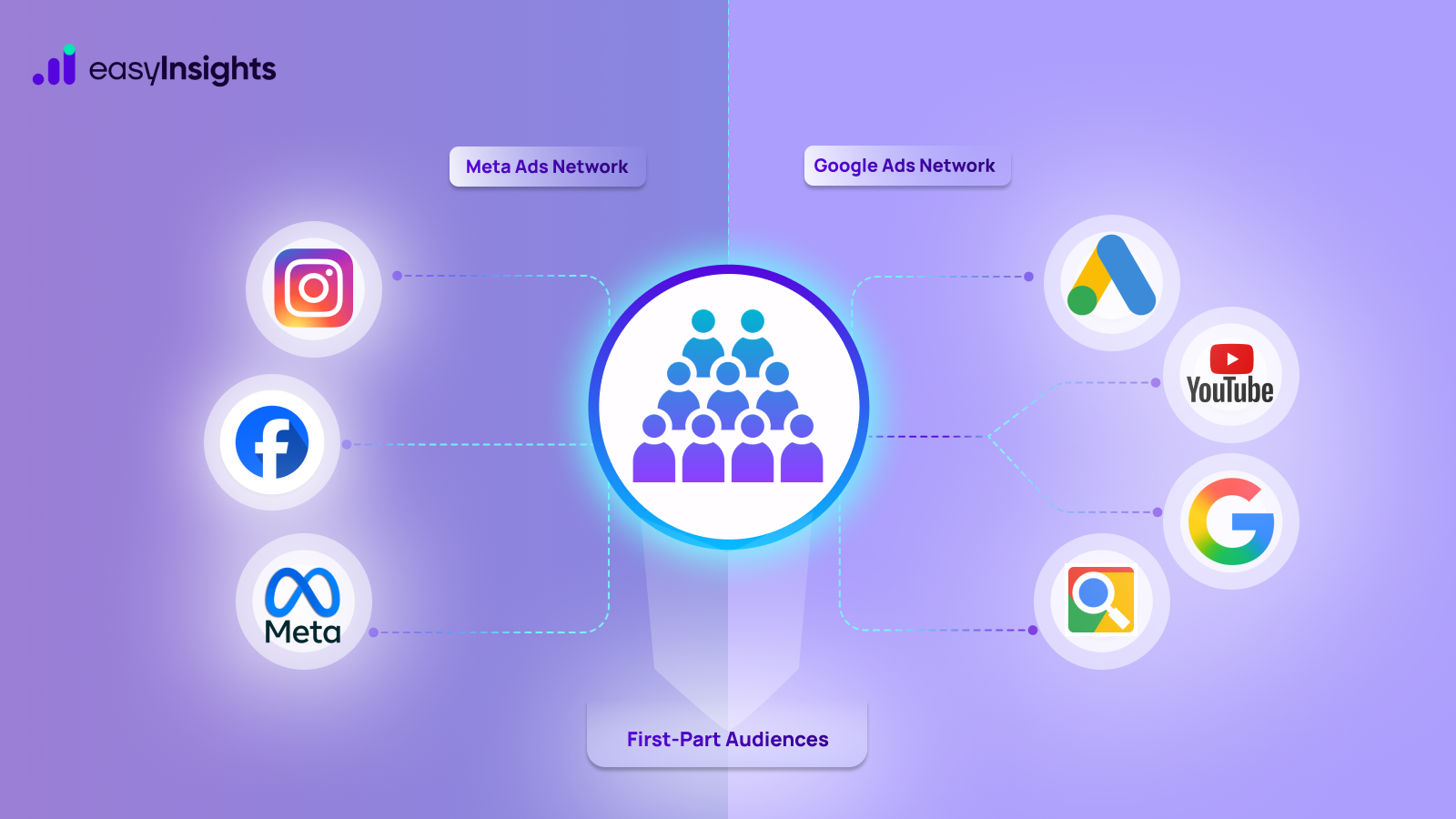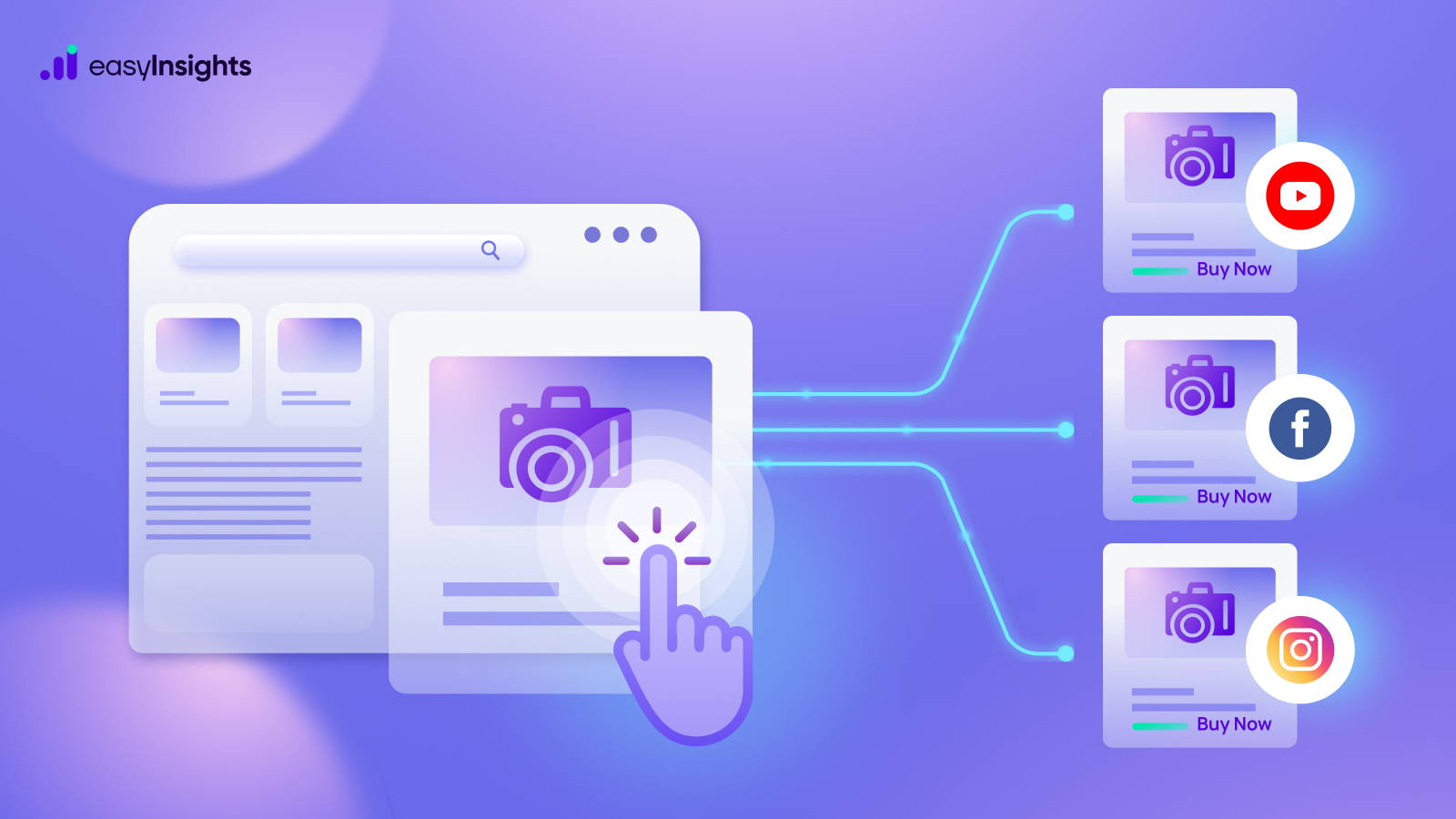The digital advertising landscape is undergoing a radical shift. With user privacy regulations tightening and third-party cookies crumbling, advertisers are desperate for new ways to effectively reach their target audience. Enter data clean rooms, a potential game changer that promises secure data collaboration in an era where privacy is prioritised.
Jump ahead to:
What are Data Clean Rooms?
Consider a data clean room as a secure vault where multiple parties can bring their anonymized datasets for analysis and collaboration. The magic lies in the anonymization techniques used. Data owners upload their information, but individual user identities are hidden using cryptographic techniques such as one-way hashing. This enables the matching of data points across datasets while keeping personal information private.
Additional Read: How to use First Party data for your e-commerce brand
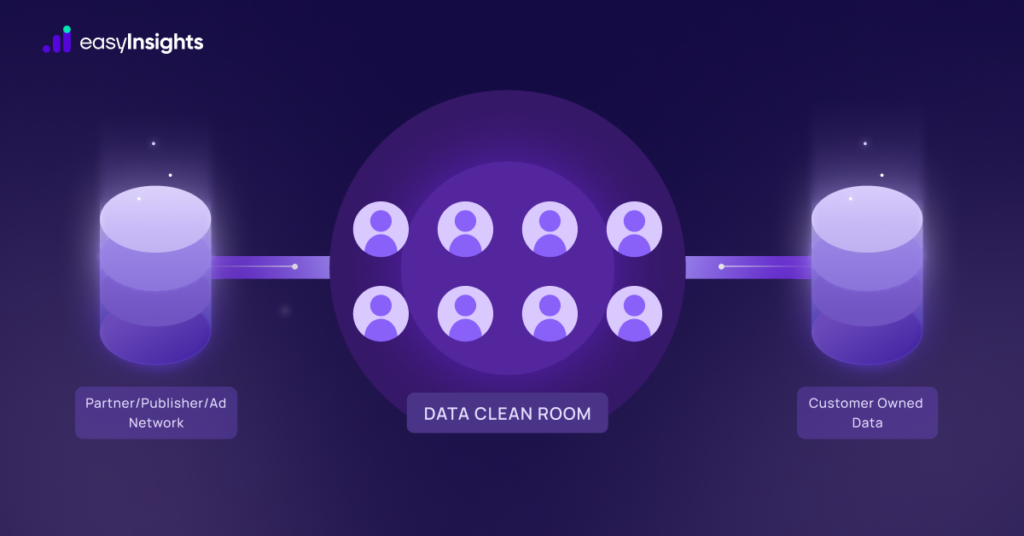
How Does it Work?
Here’s a breakdown of the data clean room process, providing a step-by-step look:
Data Preparation
The first step lays the groundwork. Both you (the advertiser) and the publisher (like Facebook) create anonymized data sets. This could include purchase history, demographics, website visits, or ad interactions with Facebook users, all of which have been stripped of personally identifiable information (PII) to ensure privacy.
Secure Upload
Imagine depositing your anonymized data package in a safe. You upload your prepared data sets into the data clean room environment. This secure space ensures that no sensitive information is ever exchanged directly between you and the publisher.
Anonymous Matching
Now for the clever part! The data clean room employs a unique technique known as one-way hashing. This is similar to comparing fingerprints; it allows the system to identify common threads between your data and the publisher’s data without disclosing any individual user information.
Privacy-Preserving Analysis
This is where the insights emerge! The data clean room uses sophisticated algorithms to analyse combined anonymized data sets. This allows you to identify trends and audience behaviour patterns while keeping all user data anonymous.
Aggregated Reporting
Forget about individual user data. The results are presented as reports containing aggregated data. Consider seeing insightful information like “How many people saw our ad and bought clothes?” rather than being able to identify specific individuals (“Who bought clothes after seeing the ad?”).
Core Use Cases for Data Clean Rooms

Despite the limitations, data clean rooms offer exciting possibilities for advertisers in a privacy-conscious world:
- Enhanced Audience Targeting: Combine your customer data with anonymized data from other sources to gain a more comprehensive understanding of your target audience. Consider targeting fitness enthusiasts across multiple platforms based on their anonymous purchase history and website visits.
- Improved Campaign Measurement: Track campaign performance across channels and platforms with unparalleled precision. Data clean rooms allow you to understand the entire customer journey and optimise your campaigns for better results.
- Fraud Detection: Work with other advertisers to identify and prevent fraudulent activity across multiple platforms. Sharing anonymized data on suspicious patterns can help you build a stronger defence against fraud.
Beyond the Basics: Advanced Applications for Performance Marketers
Data clean rooms offer even more benefits than the core functionalities:
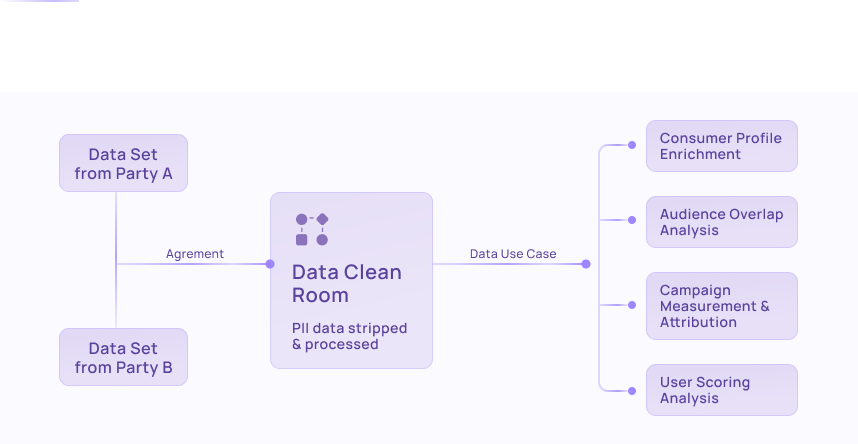
Performance Measurement:
Data clean rooms excel at measuring campaign performance. You can combine your CRM data, including purchase dates, with ad exposure data from Publishers. This enables you to precisely associate new customers with specific marketing activities across advertising channels.
Building More Specific Audiences:
The ability to target highly specific audiences is game-changing. It collect information from authorised third-party sources and categorise it by demographics, behaviour, and location. This enriches your internal database, allowing for more detailed analysis.
Here’s an example. Assume you own an e-commerce store with customer attributes and purchase history. You can generate target segments and upload them to a data clean room. Working with ad partners, you can then compare your first-party data to their third-party data to find a potential audience with similar characteristics. This allows you to create targeted campaigns while protecting user privacy.
Additional Reading : How Data Activation Will Transform Performance Marketing In 2024
Optimal Reach and Frequency Measurement:
Data clean rooms eliminate the guesswork in ad delivery. With PII-level impression data from ad networks, you can see which ads are served to which customers and at what frequency. This allows you to avoid duplicate ad impressions, reduce ad fatigue, and improve your media buying strategy.
Incrementality Measurement:
Incrementality measurement allows for accurate evaluation of marketing effectiveness. It enables you to combine impression data, audience data, and your own conversion data. This allows you to compare the results of exposed and unexposed groups, providing a clear picture of the incremental lift from your marketing campaigns.
Showcasing User Quality to Prospective Advertisers:
Publishers can use data clean rooms to demonstrate the quality of their audience to prospective advertisers. Anonymized user-level data can be uploaded to the secure environment, allowing advertisers to assess audience overlap and user quality based on a variety of criteria. This creates a valuable “sandbox” in which publishers and advertisers can demonstrate user value.
Forging 1st-Party Data Partnerships:
It promotes collaboration within the advertising ecosystem. Two parties can agree to securely match their datasets in a permission-based environment. This enables secure cross-analysis, which can speed up product development and improve strategic marketing planning.
Training & Inference Model:
Training and Inference Models: Historically, training AI models necessitated granular user-level data. Data clean rooms provide a secure environment for training and testing models using anonymized cohorts. This allows you to make predictions about customer behaviour while maintaining privacy.
Propensity Scoring:
Have you ever wondered whether a customer is likely to make a purchase? Propensity score models can estimate this. Data clean rooms enable you to create such models from anonymized data sets, allowing you to prioritise your marketing efforts and target the most promising leads.
Additional Read: Why do B2B Companies need Composable CDPs?
Why Data Clean Rooms Aren’t Everywhere (Yet)
Data clean rooms offer a promising solution for advertisers in a privacy-conscious world, but they haven’t achieved universal adoption just yet. Here’s a breakdown of the key hurdles:
- Cost Considerations: Setting up and utilizing data clean rooms can be expensive. While walled gardens offer alternatives, their complex operations can create logistical headaches for everyone involved.
- Data Sharing Concerns: The core functionality of data clean rooms relies on data sharing. However, some advertisers are hesitant to share detailed transactional data due to privacy misconceptions. Remember, “garbage in, garbage out” – poor quality data leads to unreliable measurement.
- Standardization Challenges: Universal implementation standards for data clean rooms are still under development. This means pooling data from various sources with different formats can be quite time-consuming, requiring extensive pre-processing work.
- Lingering User-Level Data Access: It’s important to acknowledge that user-level data is still accessible in some cases, like with consenting iOS users and Android devices. This may lessen the immediate urgency for some companies to adopt data clean rooms.
- Security Concerns: Security remains a top concern. It’s crucial to choose data clean room providers with robust security protocols to protect sensitive information.
- Limited Insights: Data clean rooms primarily deal with aggregated data, offering insights into trends rather than individual user behavior. This can be a limitation for advertisers seeking highly granular customer understanding.
- Technical Expertise: Implementing and using data clean rooms requires technical expertise and integration with existing marketing and analytics tools.
Conclusion
While data clean rooms aren’t a silver bullet, they represent a significant leap forward for advertisers navigating a privacy-first world. While challenges like cost, data security, and limited access to granular insights exist, the potential benefits are undeniable. Data clean rooms offer a secure space for collaboration, foster innovation with advanced analytics, and equip marketers with the tools to measure performance effectively. As the technology matures and privacy regulations solidify, data clean rooms are poised to become an essential tool for advertisers seeking success in the new era of advertising.


